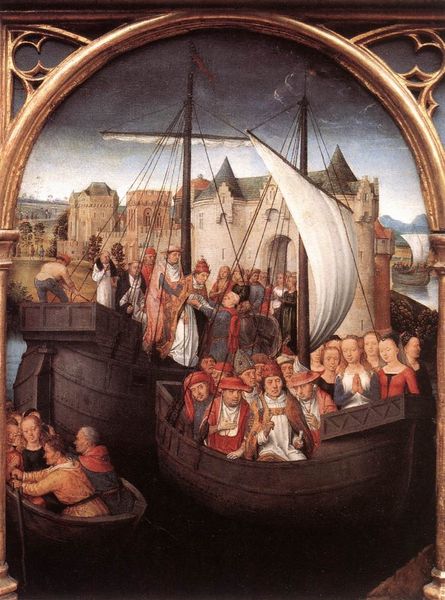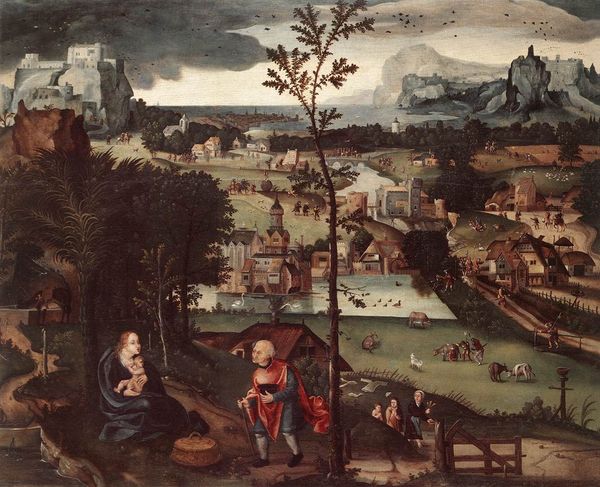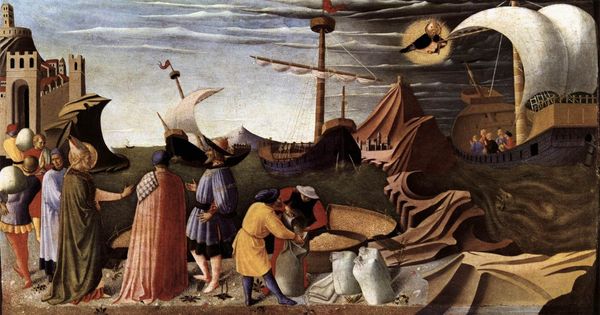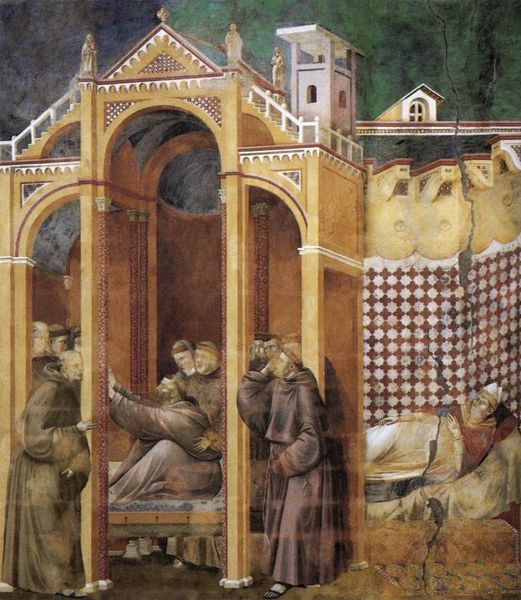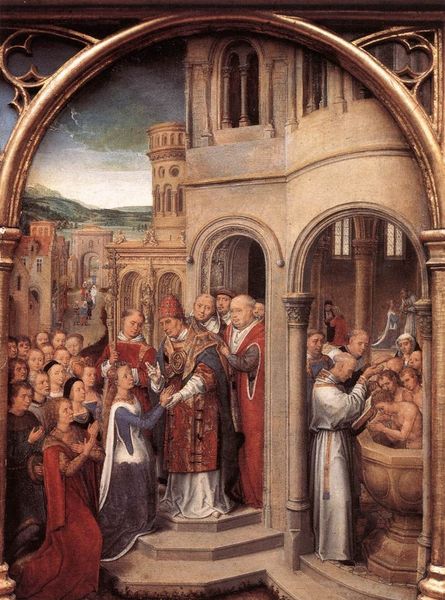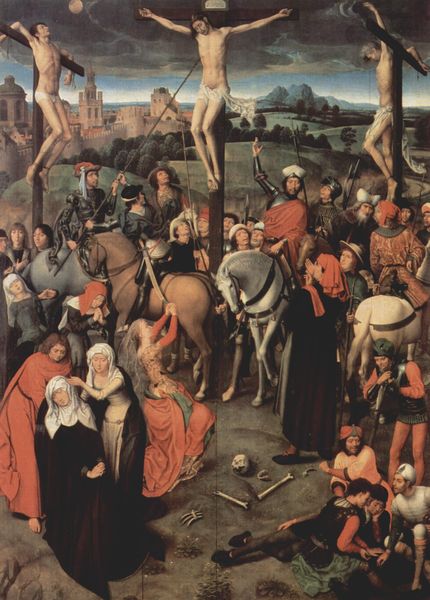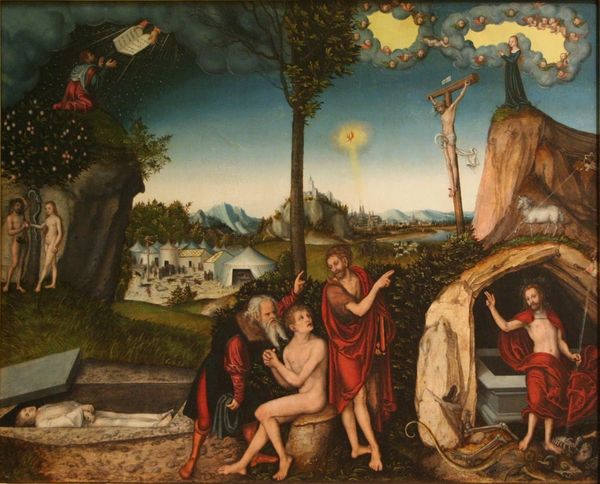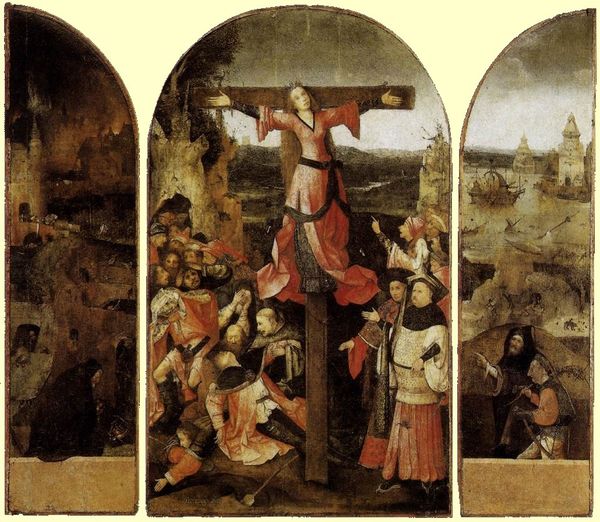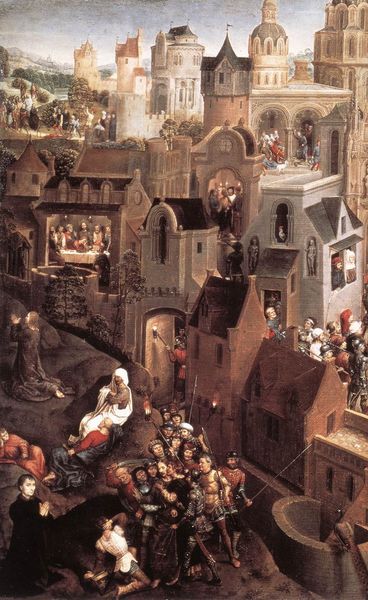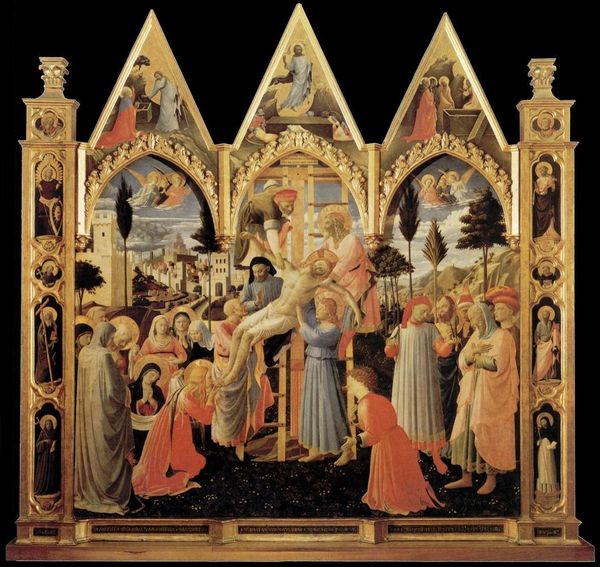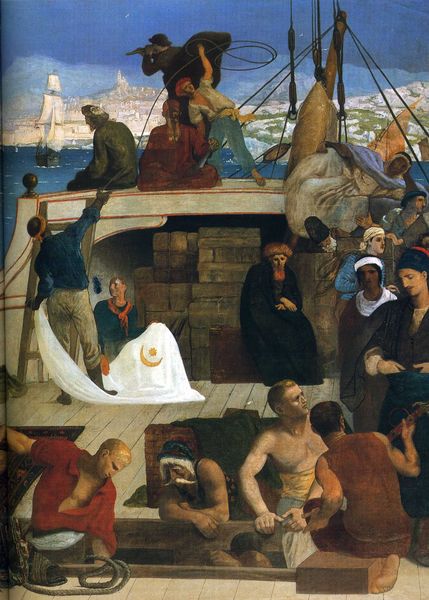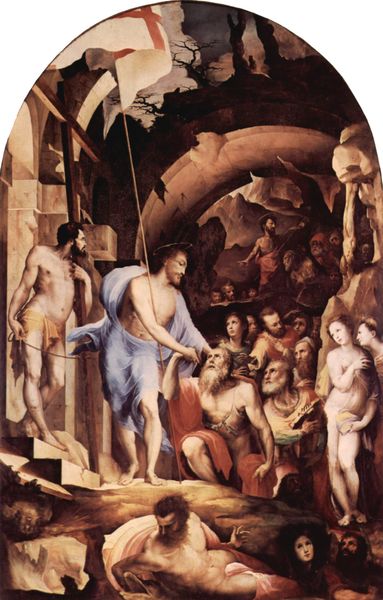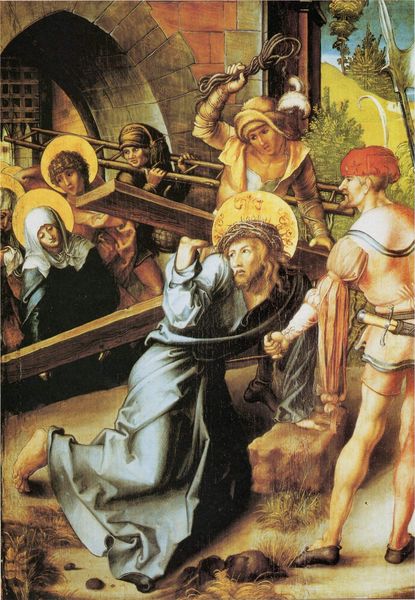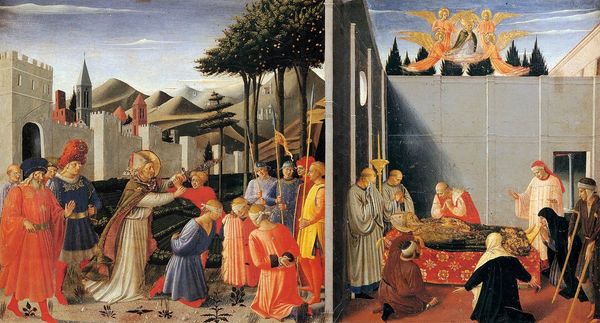
St. Ursula and her companions landing at Basel, from the Reliquary of St. Ursula 1489
0:00
0:00
hansmemling
Memling Museum (Old St. John's Hospital), Bruges, Belgium
painting, oil-paint
#
painting
#
oil-paint
#
landscape
#
figuration
#
oil painting
#
history-painting
#
northern-renaissance
#
early-renaissance
Copyright: Public domain
Hans Memling painted this panel of Saint Ursula and her companions landing at Basel as part of a reliquary in Bruges. Its meaning, like that of all art, is highly contingent on social and institutional contexts. Memling was active in the Netherlands at a time when the local economy was becoming more integrated with larger trade networks. This image emphasizes the communal nature of that trade, showing many people traveling together. In the late medieval imagination, pilgrimages were a common way to promote social cohesion. We see that St. Ursula is surrounded by her companions, implying that she is not alone in her religious devotion. By studying documents related to Bruges' economic ties with other cities, it becomes clear that images such as these played a critical role in creating and reinforcing the social and cultural bonds that made such trade possible. In essence, the study of historical context is essential to understanding the public role of art.
Comments
No comments
Be the first to comment and join the conversation on the ultimate creative platform.
